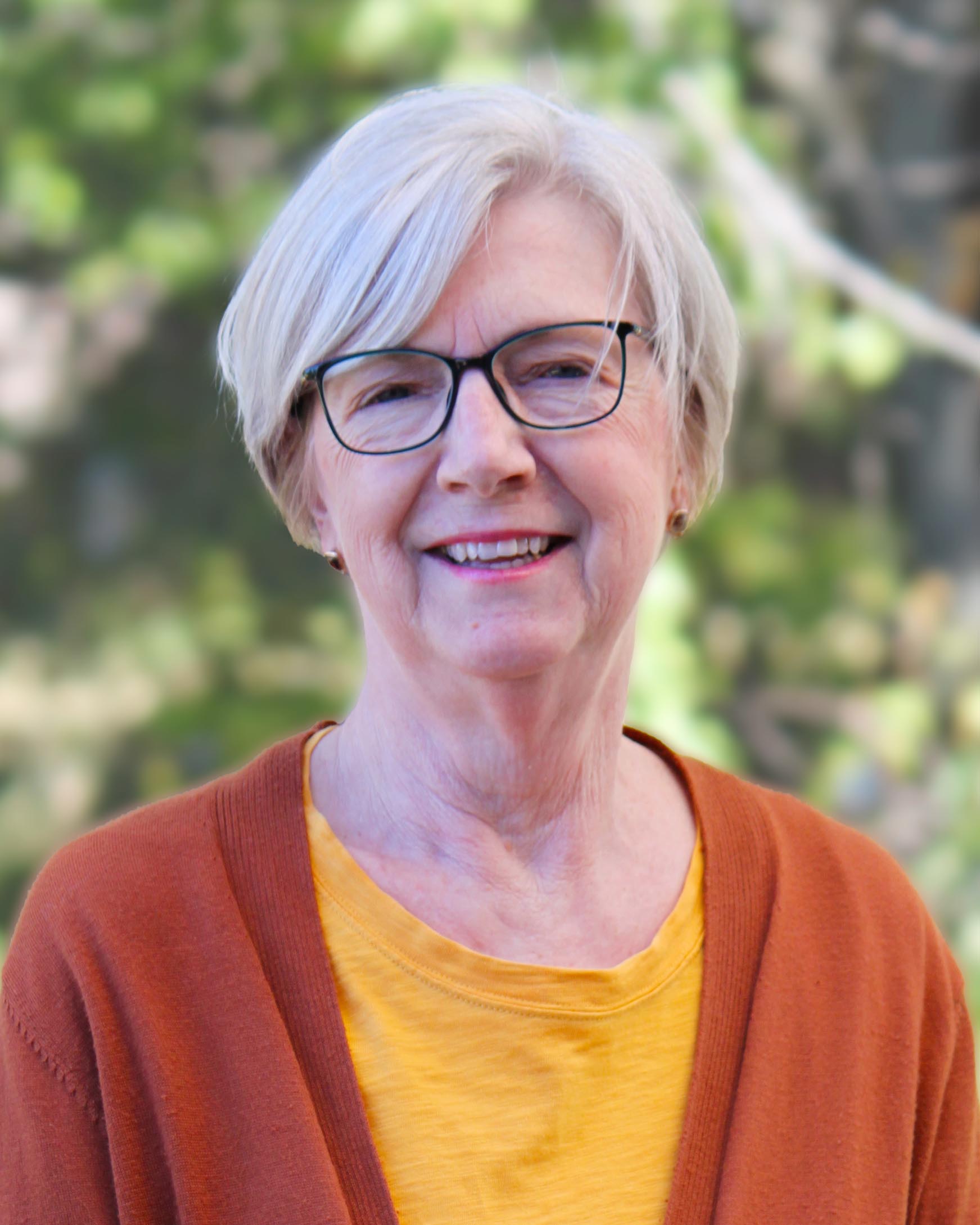
When teachers use our materials for Kindergarten through Grade 2, they are directed to use the poetry discussion time to reinforce phonics for reading and spelling. Regularly we hear from teachers using their own phonics programs who have become intrigued by an optional activity we offer that builds a “Sound City.” They want to learn more about it and where it came from. This post is dedicated to them.
Anna Ingham was not the kind of teacher who followed the pendulum swings of educational theories and new ideas. By trial and error she figured out which ideas did not meet her students’ needs and replaced them with things that would. She knew that children need reinforcement in order to make progress, so she looked for interesting ways to provide repetition that involved pupil involvement and play. “We learn by doing” became her guiding principle (1).
When Mrs. Ingham moved from rural, multi-age, one-room schools to teach in a single-grade city classroom, she found that teachers were expected to use rigid instructional methods and prescribed programs which clashed with the methods she knew to work so well. Take phonics, for example. The preferred method of the time was to teach students the alphabet letters in isolation (from letter to sound, or decoding), but her students struggled with that approach. They could identify the letters but could not hear the individual sounds in a given word. Anna began to experiment with different techniques. In The Blended Sound–Sight Program of Learning, she describes her “aha” moment:
While discussing the word green, I said to my class, “You told me what sounds you couldn’t hear. Now tell me what you can hear.” Quickly came the response, “ee.” Some children responded with “the squealy ee’s.” It became clear that one should build the words upon the sounds the children hear and then teach the simple, basic English rules in a manner appealing to them. (3)
It would take a few decades for research to prove that Mrs. Ingham was right. In the American Public Media™ documentary podcast Hard Words: Why Aren’t Our Kids Being Taught to Read?, APM Reports Senior Producer Emily Hanford summarized the research about phonics this way:
A big takeaway is that, while we use our eyes to read, the starting point for reading is sound. What a child must do to become a reader is to figure out how the words she hears and knows how to say connect to print on the page. Writing is a code humans invented to represent speech sounds. Kids have to crack that code to become readers. Children don't crack the code naturally. They need to be taught how letters represent speech sounds. Experts say that in a whole-language classroom, some kids will learn to read despite the lack of effective instruction. But without explicit and systematic phonics instruction, many children won't ever learn to read very well.
Using this approach, Anna created a classroom environment where sight words became phonetic tools her students could employ to read and spell. She printed the tool sounds, such as the squealy ee’s, on cardboard houses and hung them on the wall to give her students a resource of collected sounds and corresponding letters. This was the beginning of Sound City, which became the heart of Anna’s language arts program (23).
As I mentioned earlier, Sound City is included as an optional activity in IEW®’s Kindergarten, Grade 1, and Grade 2 Classroom Supplements. It is a teacher-constructed, interactive bulletin board activity that starts the school year as a blank canvas with a few city streets or country roads. According to Mrs. Ingham, “There is no sign saying Sound City, and there are no houses. The city does not exist” (23). Beginning with the very first phonics lesson of the school year, as each new phoneme is introduced, the teacher adds the corresponding "sound house" to the scene. With the students, Sound City is built sound by sound, building by building, as the year progresses. This is much the same way as students in the upper grades will build their Student Reference Handbook tool by tool, page by page, during the year.
The teacher guides her students to view their Sound City as a reference tool, not a classroom decoration. When the lesson is over, the city remains to engage the students and reinforce what has been taught. What phonics workbook can do that?
Our implementation coaches shared photos of some of the imaginative Sound City boards they have seen in classrooms where they conduct Demonstration and Observation and Coaching Days. According to the coaches, teachers report that their students are so captivated by Sound City activities they find the sound and letter combinations in their other lessons all day long and beg to add them to the class display. Does a phonics worksheet do this?
In the photo examples you’ll see that some teachers devote an entire bulletin board to Sound City while others combine it with word banks, posters, and poems. It’s up to you to design the Sound City that works for your classroom situation. While you follow your own phonics program, we invite you to try Sound City in your classroom to document the connection between phonemes and graphemes, which will enhance your reading and writing instruction.
Sample Sound City Boards (Note: These photos are Sound City displays as they looked after several months of school during the 2017–2018 school year. Some were taken in late fall, others in the spring.)

St. Benedict Catholic School, Richmond, VA (Grade 2)

Keeneyville School District, Hanover Park, IL (Grade 1, Bilingual Classroom)

Adams Christian Academy, Wyoming, MI (Grade 1)

St. Benedict Catholic School, Richmond, VA (Grade 1)
The posters displayed on some of the Sound City boards are IEW’s Primary Posters for Kindergarten, Grade 1, and Grade 2. (Included in Complete and Basic Teacher Packages for K–2 and can also be purchased separately.)
For an explanation of Sound City, refer to Appendix 5 in your K, 1, or 2 Classroom Supplement and read Anna Ingham’s delightful and very informative description on pages 23–28 in The Blended Sound–Sight Program of Learning (Included in IEW’s K-2 Complete Teacher Packages and can also be purchased separately).
If you would like to know more about IEW’s methods and materials for K–2, email Schools@IEW.com or call 800.856.5815, option 4 to speak to an Educational Consultant.
Works Cited
Hanford, Emily. “Why Aren't Kids Being Taught to Read?” APM Reports American Public
Media, Minnesota Public Radio, 10 Sept. 2018,
www.apmreports.org/story/2018/09/10/hard-words-why-american-kids-arent-being-taught-to-read.
Accessed on 09/17/2018.
Herron, Jeannine. “Why Phonics Teaching Must Change.” Educational Leadership, ASCD, Sept.
2008,
www.ascd.org/publications/educational-leadership/sept08/vol66/num01/Why-Phonics-Teaching-Must-Change.aspx.
Accessed on 09/22/2018.
Ingham, A.G. The Blended Sound-Sight Program of Learning, sixth ed. 2004.
IEW is a registered trademark of the Institute for Excellence in Writing, L.L.C.
|
Jean brings 34 years of classroom experience to IEW, having taught grades 1–6 in New York, Virginia, and in California, where she taught sixth-grade language arts in the Rocklin Unified School District. She was introduced to IEW in 2001 when a colleague shared Student Writing Intensive videos at weekly school staff meetings. As a result of student progress and teacher enthusiasm at her school, RUSD brought Andrew Pudewa to Rocklin many times over the next several years to train district teachers, resulting in improved student writing and test scores district-wide. Named Rocklin’s “Elementary Teacher of the Year” in 2001, Jean was also included in the 2004 and 2005 editions of Who’s Who Among America’s Teachers. |

